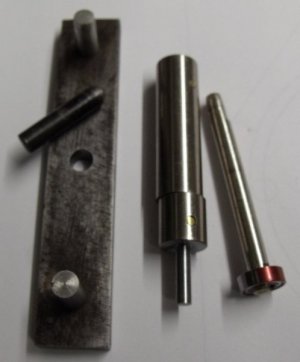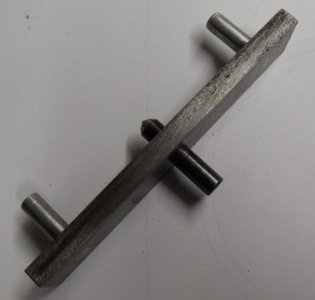The 1/2" edge finder is my go-to tool for precisely locating and edge. One main reason is that the edge finder is independent of spindle runout; something that cannot be said of probes, including
A characteristic of the edge finder is that if you approach too fast, there are two things that can cause a false trip. The first is if the finder is wobbling, it can trip prematurely giving an undershot reading. Secondly, if moving too fast, you can overshoot the edge before it edge finder can trip.
I will approach an edge relatively rapidly to get a rough sense of where the edge is. I then back off and begin a slow approach.I have a DRO on the mill/drill and the CNC has the ability to jog in .0001" steps as well. I will approach the trip point at about .001"/sec. The final approach is done at about .0001"/sec. I repeat my process to verify that the trip point is consistent within .0001". To reset the edge finder, I back it off by about a thousandth and use the face of my fingernail to center the edge finder.
When I have found my edge, I will zero the DRO, lift my edge finder to clear, move towards the the edge by 1/2 the diameter of the edge finder, and reset my zero. For finding the center of a feature, I find one edge and zero the DRO then move to the opposite edge , using care not to change the rpm or z axis and find that edge. My DRO's both have the ability to divide by two, which wi;ll place the zero point at the trrue center of the feature. This works for rectangular features and for circular features, both inside and outside.
For circular features I try to hit close to the center for the other axis and when finding the second edge, I make sure that I am at the same position on the second axis. Once the center is found for the first axis, I move on to the second axis and repeat. Usually, this is sufficient but if my estimate of the other axis zero was off, I will find the first axis zero again. Usually, there is no correction.
The same process can be done without a DRO. Just advance the dial by .001" and see if the edge finder trips. If not, repeat the process. With practice, you will be able to find an edge to better than .001" in a matter of seconds. This process accounts for any backlash, placing the zero point halfway between. Depending on the operation and the amount of backlash in the machine, you would want to correct for backlash by moving to your desired point and an additional amount equal to half the backlash.



